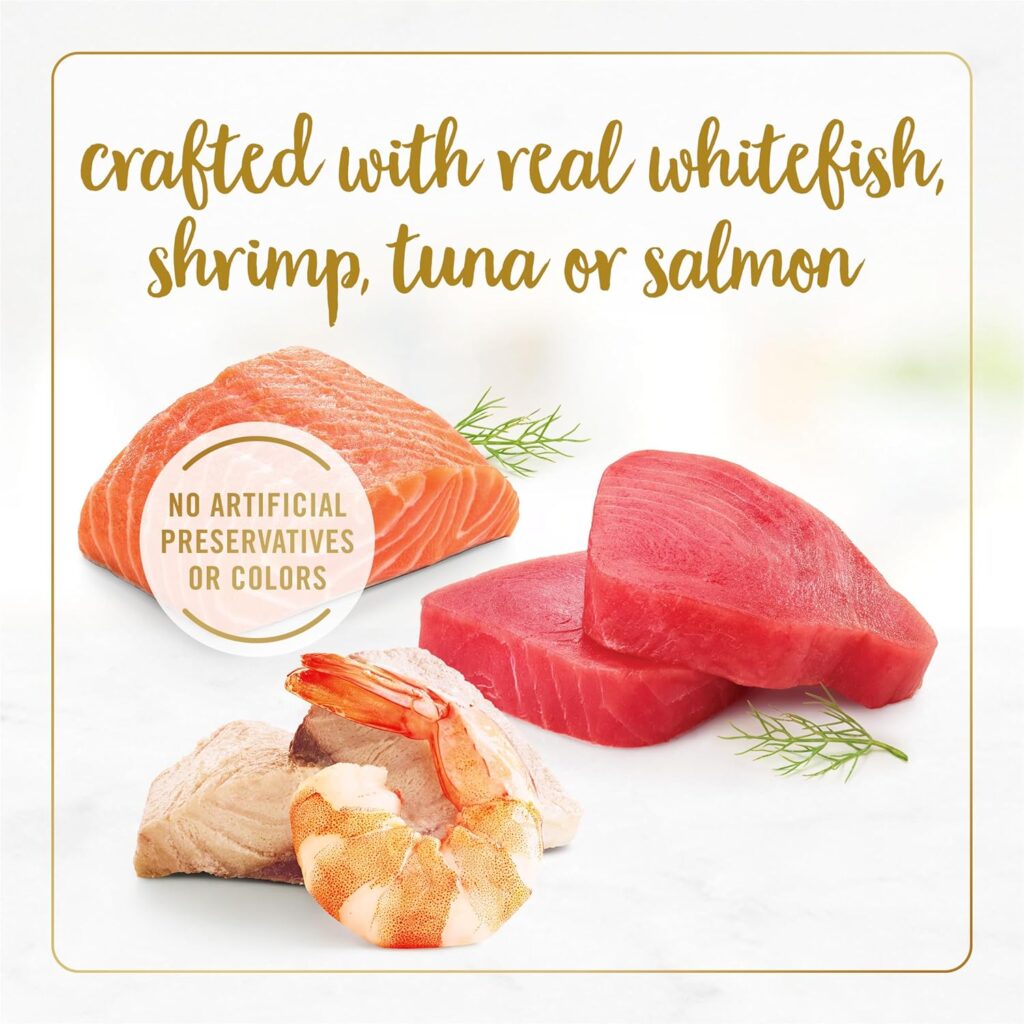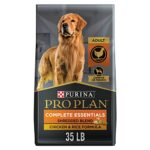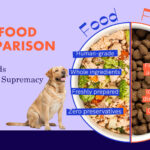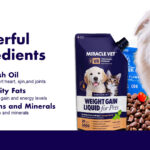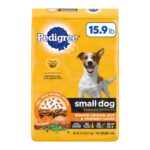Chicken meal in dog food is a dry, rendered product from chicken flesh and skin, excluding feathers, heads, feet, and entrails. It provides a concentrated protein source for pets.
What is Chicken Meal in Dog Food? Chicken meal stands as a popular ingredient in many commercial dog foods. Rich in essential amino acids and nutrients, it supports muscle development and overall health. Pet owners often seek high-quality protein sources to ensure their dogs get the necessary nutrition.
Chicken meal, being more nutrient-dense than fresh chicken, offers an excellent option. It’s important to read dog food labels carefully to understand the sources of protein. Opting for products listing chicken meal can enhance your dog’s diet, promoting better health and vitality.
Introduction To Chicken Meal
Understanding dog food ingredients can be confusing. One common ingredient is chicken meal. It is often misunderstood, yet it plays a crucial role in dog nutrition. Let’s explore what chicken meal is and why it’s important.
The Role In Dog Nutrition
Chicken meal is a protein-rich ingredient. It is made by rendering chicken meat. This process removes water and fat, leaving a concentrated protein source. Dogs need protein for muscle growth, energy, and overall health.
Chicken meal is also packed with essential amino acids. These are building blocks for healthy skin and a shiny coat. It provides more protein than fresh chicken. This makes it a valuable ingredient in dog food.
Common Misconceptions
Many people think chicken meal is low quality. This is a misconception. High-quality chicken meal comes from clean, rendered chicken parts. It does not include feathers, heads, or feet.
Some believe chicken meal is less nutritious than fresh chicken. In reality, it offers more concentrated nutrients. It is a reliable source of protein and amino acids. This makes it an excellent choice for dog food.
| Ingredient | Protein Content |
|---|---|
| Fresh Chicken | 20% |
| Chicken Meal | 65% |
- Chicken meal is a concentrated protein source.
- It contains essential amino acids.
- It is more nutritious than fresh chicken.

Credit: avodermnatural.com
Defining Chicken Meal
Chicken meal is a common ingredient in many dog foods. It provides essential nutrients for your furry friend. But what exactly is chicken meal?
Ingredients Breakdown
Chicken meal is made from clean chicken parts. These parts include meat, skin, and bones. No feathers, heads, or feet are used. This ensures high nutritional value.
Here’s a simple table to illustrate what goes into chicken meal:
| Ingredient | Included | Excluded |
|---|---|---|
| Meat | ✔️ | ❌ |
| Skin | ✔️ | ❌ |
| Bones | ✔️ | ❌ |
| Feathers | ❌ | ✔️ |
| Heads | ❌ | ✔️ |
| Feet | ❌ | ✔️ |
Processing Techniques
Creating chicken meal involves several steps. First, the chicken parts are cooked at high temperatures. This process removes moisture. It also kills harmful bacteria.
Next, the cooked mixture is dried. This creates a powder-like substance. The drying process is crucial. It helps concentrate the nutrients.
Finally, the dried product is ground. This makes it easier to mix into dog food. The result is a nutrient-rich ingredient.
Here’s a quick breakdown of the process:
- Cook chicken parts.
- Remove moisture.
- Kill bacteria.
- Dry the mixture.
- Grind into powder.
This is how chicken meal is made. It’s a valuable ingredient in dog food. Your dog gets the nutrition it needs.
Nutritional Profile
Understanding the nutritional profile of chicken meal in dog food is crucial. It helps ensure your furry friend gets the best diet. Chicken meal is a concentrated protein source. It also provides essential vitamins and minerals for your dog’s health.
Protein Content Analysis
Chicken meal is rich in protein. It contains about 65% protein by weight. This makes it an excellent source of amino acids. Dogs need amino acids for muscle growth and repair. It also supports a healthy immune system.
Here’s a quick breakdown of the protein content:
| Nutrient | Percentage |
|---|---|
| Protein | 65% |
| Fat | 12% |
| Moisture | 10% |
Vitamins And Minerals
Chicken meal is not just about protein. It also contains important vitamins and minerals. These nutrients are vital for your dog’s overall well-being. Here are some key vitamins and minerals found in chicken meal:
- Vitamin B6: Supports brain function and energy levels.
- Vitamin B12: Essential for red blood cell formation.
- Iron: Crucial for oxygen transport in the blood.
- Phosphorus: Supports bone health.
- Selenium: Acts as an antioxidant.
These nutrients help keep your dog healthy and active. A balanced diet with chicken meal ensures they get all they need.
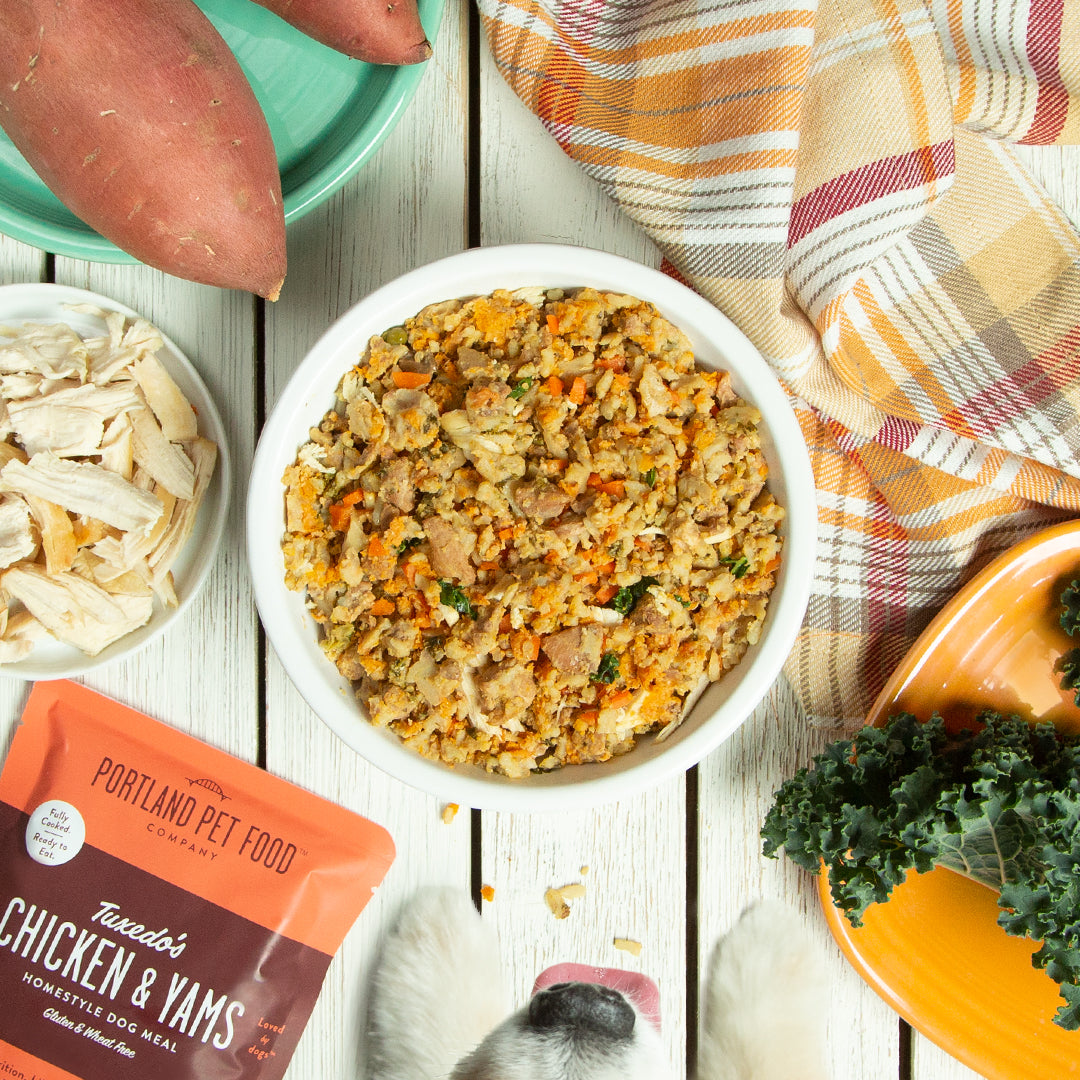
Credit: portlandpetfoodcompany.com
Comparison With Whole Chicken
Understanding the difference between chicken meal and whole chicken in dog food is crucial. Both ingredients have their pros and cons. This section will provide a detailed comparison focusing on nutrient density and cost-effectiveness.
Nutrient Density
Chicken meal is more nutrient-dense than whole chicken. It is made by removing moisture and fat. This makes it a concentrated source of protein. Whole chicken, on the other hand, contains water and fat. This reduces its protein concentration.
Here’s a table comparing the nutrient content:
| Ingredient | Protein Content | Fat Content | Moisture |
|---|---|---|---|
| Chicken Meal | 65% | 12% | 10% |
| Whole Chicken | 20% | 10% | 70% |
Cost-effectiveness
Chicken meal is more cost-effective than whole chicken. It provides more protein per unit weight. This makes it a better option for budget-conscious pet owners.
Consider these points:
- Chicken meal has less water content.
- It offers a higher protein yield per dollar spent.
Whole chicken is often pricier due to its lower protein content and higher water weight.
The Manufacturing Process
Understanding how chicken meal is made helps to ensure its quality. The process involves several steps that guarantee safety and nutrition for your dog. Let’s explore the key stages involved.
Rendering Methods
Rendering is the first step in making chicken meal. It involves cooking chicken parts at high temperatures. This process removes moisture and fat. The remaining product is then ground into a fine powder.
The rendering process can use either dry or wet methods. Dry rendering involves cooking the chicken in large batch cookers. This method is efficient and produces a consistent product. Wet rendering, on the other hand, involves boiling the chicken parts in water. This method helps in separating the fat more effectively.
Quality Control Measures
Quality control is crucial in the manufacturing process. It ensures that the final product is safe and nutritious for pets. Various steps are taken to maintain high standards.
- Ingredient Sourcing: Only high-quality chicken parts are selected.
- Temperature Monitoring: Cooking temperatures are closely monitored to kill bacteria.
- Moisture Testing: The moisture content is tested to prevent spoilage.
- Lab Testing: Samples are sent to labs to check for contaminants.
These measures ensure that the chicken meal is safe and nutritious for your dog. Regular audits and inspections also help maintain these standards.
| Quality Control Step | Description |
|---|---|
| Ingredient Sourcing | Choosing high-quality chicken parts |
| Temperature Monitoring | Ensuring bacteria are killed |
| Moisture Testing | Checking moisture to prevent spoilage |
| Lab Testing | Testing samples for contaminants |
Regulations And Standards
Understanding the regulations and standards for chicken meal in dog food is crucial. These guidelines ensure the food is safe and nutritious for your furry friend.
Aafco Guidelines
The Association of American Feed Control Officials (AAFCO) sets standards for pet food. They define what can be labeled as chicken meal. According to AAFCO, chicken meal is a dry, rendered product from chicken parts. It includes necks, feet, and undeveloped eggs. These parts are cleaned, cooked, and ground.
AAFCO ensures the chicken meal meets specific nutritional requirements. This guarantees that it provides the necessary proteins and nutrients. The food must be safe for dogs to eat.
Fda Oversight
The Food and Drug Administration (FDA) also plays a role in pet food safety. They enforce laws to ensure the food is pure and free from harmful substances. The FDA requires that pet food labels are truthful and not misleading.
They inspect facilities where chicken meal is produced. This ensures the food is made in sanitary conditions. The FDA also checks for harmful bacteria and other contaminants. This helps keep your dog safe from foodborne illnesses.
| Regulatory Body | Role |
|---|---|
| AAFCO | Sets nutritional standards |
| FDA | Ensures food safety and proper labeling |
Both AAFCO and FDA regulations ensure chicken meal in dog food is safe and nutritious. This helps you make informed choices for your pet’s diet.
Benefits In Canine Diets
Chicken meal in dog food offers numerous benefits for dogs. It is a concentrated source of protein and nutrients. These benefits contribute to the overall health and well-being of your furry friend.
Muscle Development
Chicken meal is rich in high-quality protein. Protein helps build and maintain strong muscles. Dogs need strong muscles for daily activities and healthy growth.
Chicken meal contains essential amino acids. These are building blocks for muscle tissue. Strong muscles improve mobility and reduce injury risks.
Energy Levels
Chicken meal provides a concentrated energy source. Dogs need energy for play, walks, and other activities. High energy levels keep dogs active and happy.
Fats and proteins in chicken meal offer sustained energy. This helps dogs stay active throughout the day. An energized dog is a happy dog.
Chicken meal also supports metabolic health. A healthy metabolism ensures efficient energy use. This leads to a balanced and active lifestyle.
Potential Concerns
Chicken meal in dog food has benefits, but there are potential concerns. Let’s explore these concerns under two main headings.
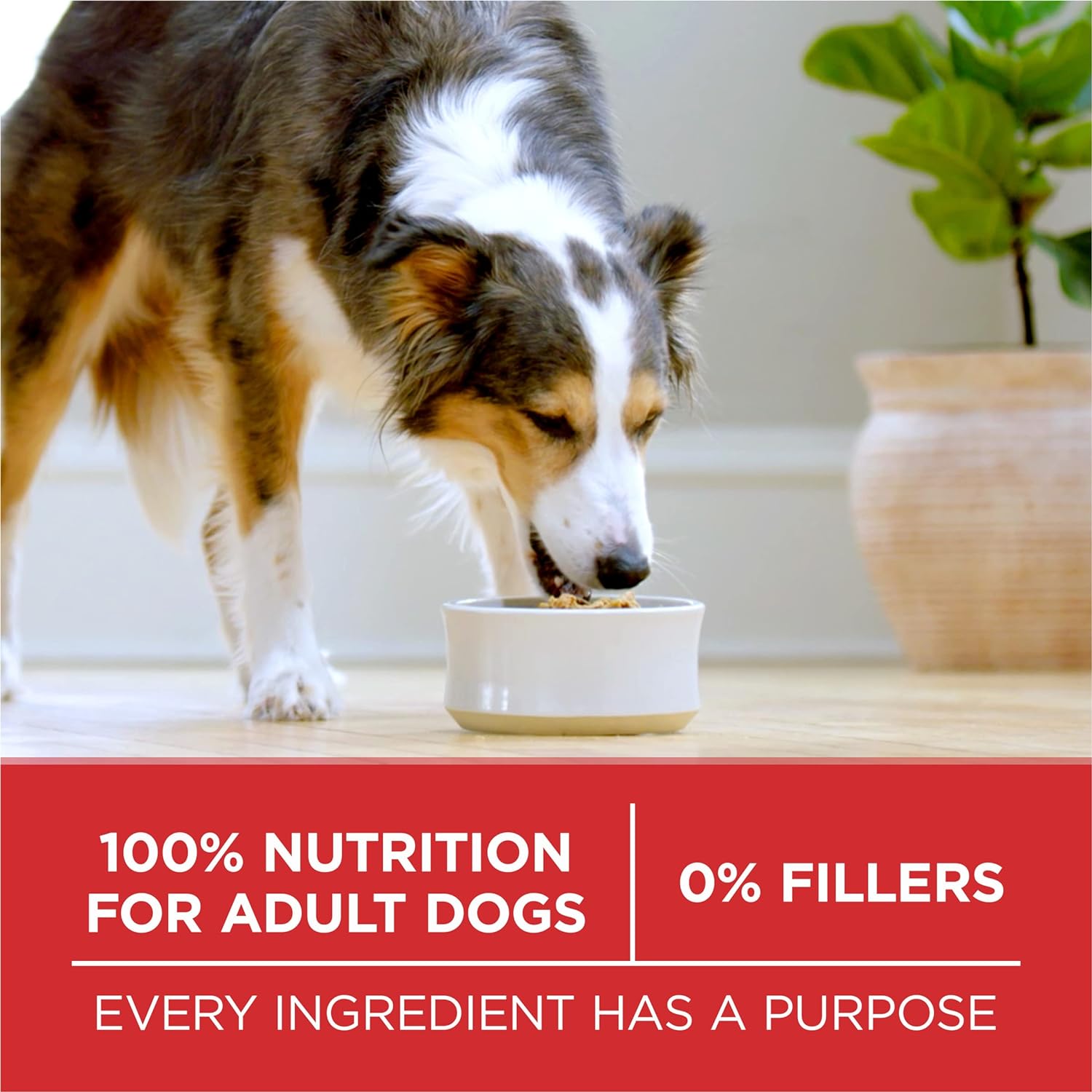
Allergen Considerations
Some dogs may be allergic to chicken meal. Symptoms of allergies include:
- Itchy skin
- Digestive issues
- Ear infections
If your dog shows these symptoms, consult your vet. Dogs with allergies need special diets.
Contamination Risks
Chicken meal can sometimes be contaminated. This happens during the processing stage. Contaminated food can cause:
- Food poisoning
- Stomach upset
- Serious health issues
Choose trusted brands for your dog’s safety. Check for quality certifications on the packaging. These steps ensure your dog eats safe, healthy food.
Labeling And Transparency
Understanding labeling and transparency is crucial when choosing dog food. It helps you know what you’re feeding your pet. Companies must list ingredients clearly. They should use honest marketing tactics.
Ingredient List Insights
The ingredient list shows what’s inside the dog food. Look for chicken meal as a primary ingredient. It should be high on the list. This means it’s a major part of the food.
Chicken meal is made from ground chicken parts. It contains muscle meat, bones, and organs. This makes it a rich source of protein. Here’s a sample ingredient list:
| Ingredient | Description |
|---|---|
| Chicken Meal | Ground chicken parts, high in protein |
| Brown Rice | Whole grain, source of carbohydrates |
| Chicken Fat | Source of essential fatty acids |
Marketing Tactics
Companies use marketing tactics to sell dog food. They may use terms like “premium” or “natural”. These terms can be misleading. Always read the ingredient list. Don’t rely on fancy words on the package.
Some brands highlight “grain-free” options. This is good for dogs with allergies. But it’s not always necessary for all dogs. Check if chicken meal is still the main ingredient. Your dog needs protein for strong muscles.
Here are some common marketing tactics to watch for:
- Using terms like “human-grade”
- Highlighting “organic” ingredients
- Emphasizing “no fillers”
Consumer Perceptions
Understanding consumer perceptions of chicken meal in dog food is crucial. It helps in making informed decisions for your furry friend. This section delves into market trends and owner preferences to give a comprehensive view.
Market Trends
Market trends show a rise in the use of chicken meal in dog food. Pet owners seek high-protein and nutritious options. Brands have responded by incorporating chicken meal into their formulas. This ingredient is not only affordable but also highly nutritious. The market is shifting towards more transparent labeling. This helps consumers understand what they are feeding their pets.
Owner Preferences
Owners prefer dog foods that list specific ingredients. Chicken meal is often chosen for its high protein content. It provides essential nutrients like amino acids and minerals. Dog owners also value the digestibility of chicken meal. This ingredient helps in maintaining a healthy coat and skin. Owners want the best for their pets, and chicken meal meets many of their criteria. Below is a table summarizing key owner preferences:
| Preference | Reason |
|---|---|
| High Protein | Essential for muscle growth and repair |
| Digestibility | Easy on the stomach |
| Nutrition | Rich in amino acids and minerals |
Many pet owners look for dog foods with natural ingredients. They avoid artificial additives and preservatives. Chicken meal fits well into this category. Brands that use chicken meal often highlight its benefits. This builds trust and encourages repeat purchases. The preferences of dog owners are clear and focused on quality and nutrition.
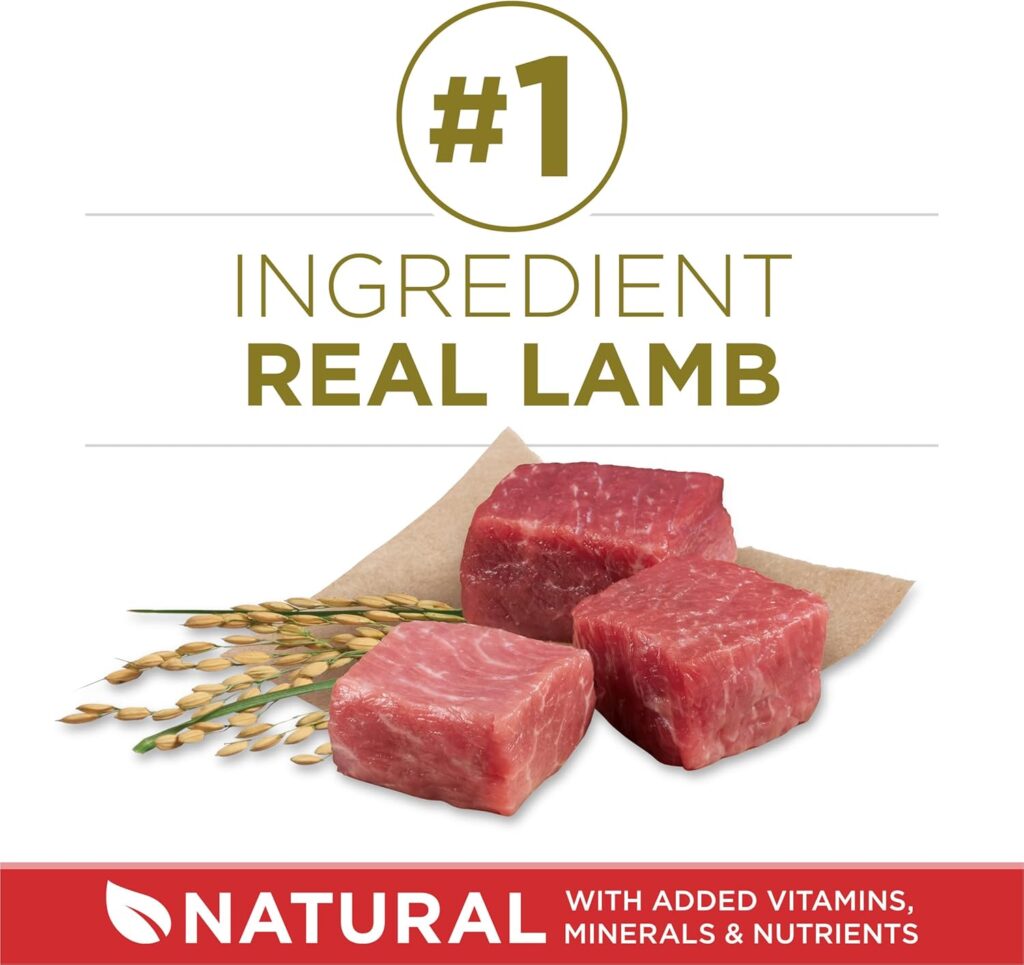
Expert Opinions
Understanding what goes into your dog’s food is essential. Experts provide insights on the benefits of chicken meal in dog food. Let’s hear from veterinarians and nutritionists.
Veterinarian Recommendations
Veterinarians often recommend chicken meal for dog food. It is a concentrated source of protein. This protein supports muscle development and overall health.
Chicken meal is made from clean chicken parts. These parts include skin, bones, and meat. It is cooked to remove water, creating a nutrient-rich ingredient.
Veterinarians believe chicken meal is better than raw chicken. It has more protein and less water content. This makes it a great choice for active dogs needing energy.
Nutritionist Advice
Nutritionists also support the use of chicken meal. It is a balanced source of essential nutrients. These nutrients include amino acids, vitamins, and minerals.
Chicken meal provides more nutrients per pound than fresh chicken. This means your dog gets more benefits from smaller amounts of food.
Nutritionists highlight the importance of quality. They suggest choosing dog food brands using high-quality chicken meal. This ensures your dog gets the best possible nutrition.
Below is a table summarizing the benefits of chicken meal:
| Benefit | Description |
|---|---|
| High Protein | Supports muscle growth and repair. |
| Rich in Nutrients | Contains essential amino acids, vitamins, and minerals. |
| Low Water Content | More concentrated nutrition per serving. |
In summary, experts agree that chicken meal is a valuable ingredient. It offers concentrated protein and essential nutrients. This makes it a top choice for dog food.

Credit: truthaboutpetfood.com
Case Studies
Case studies provide real-world examples of how chicken meal impacts dog health. These stories highlight the benefits and practical applications of chicken meal in dog food formulations. Let’s dive into some success stories and reformulation examples.
Dietary Success Stories
Many pet owners have seen improvements in their dogs’ health by switching to foods with chicken meal. Here are a few success stories:
- Max: Max, a Labrador, had digestive issues. His vet recommended a chicken meal-based diet. Within weeks, his digestion improved, and he gained healthy weight.
- Luna: Luna, a Poodle, struggled with dull fur. After eating chicken meal dog food, her coat became shiny and soft.
- Charlie: Charlie, a senior Beagle, had low energy. A diet with chicken meal boosted his energy levels, making him more active.
Reformulation Examples
Several dog food brands have reformulated their recipes to include chicken meal. These changes have led to positive outcomes:
| Brand | Previous Ingredient | Reformulated Ingredient | Outcome |
|---|---|---|---|
| Healthy Paws | Beef Meal | Chicken Meal | Improved digestion and coat health |
| NutriPet | Fish Meal | Chicken Meal | Increased energy and weight gain |
| Canine Best | Lamb Meal | Chicken Meal | Enhanced overall health and vitality |
These examples show how chicken meal can benefit dogs. They highlight the importance of choosing the right ingredients for pet health.
Homemade Vs. Commercial Foods
Choosing between homemade and commercial foods for your dog’s diet can be tough. Each option has its own benefits and drawbacks. Understanding these can help you make the best choice for your pet.
Diy Meal Preparations
Making your own dog food gives you control over the ingredients. You know exactly what goes into your dog’s meal. This can be helpful if your dog has allergies or specific dietary needs.
- Fresh Ingredients: You can choose fresh, high-quality ingredients.
- Customization: Tailor the meal to your dog’s tastes and needs.
- Transparency: No hidden additives or preservatives.
But, making homemade dog food can be time-consuming. It requires careful planning to ensure nutritional balance. You need to include the right proportions of proteins, fats, and carbohydrates. A table can help you balance ingredients:
| Ingredient | Proportion |
|---|---|
| Protein (Chicken Meal, Fish) | 40% |
| Vegetables (Carrots, Peas) | 30% |
| Carbs (Brown Rice, Oats) | 20% |
| Fats (Fish Oil, Olive Oil) | 10% |
Store-bought Comparisons
Commercial dog food is convenient and time-saving. It is designed to be nutritionally balanced and meets industry standards.
- Convenience: No need to prepare meals daily.
- Nutritional Balance: Formulated to meet AAFCO standards.
- Variety: Different flavors and formulas available.
But, you need to read the labels carefully. Not all commercial foods are made equal. Look for high-quality ingredients like chicken meal. Avoid products with fillers and artificial additives.
Below is a comparison table:
| Feature | Homemade | Commercial |
|---|---|---|
| Ingredient Control | High | Medium |
| Convenience | Low | High |
| Cost | Variable | Fixed |
| Nutritional Balance | Requires Planning | Pre-formulated |
Choosing between homemade and commercial dog food depends on your lifestyle and your dog’s needs. Both options have their advantages. Making an informed decision ensures your dog gets the best nutrition possible.
Future Of Dog Food Ingredients
The future of dog food ingredients is evolving rapidly. Pet owners demand healthier and more sustainable options. This shift encourages innovation and eco-friendly practices. Let’s explore the future of dog food ingredients through the lens of innovative alternatives and sustainability concerns.
Innovative Alternatives
Companies are exploring innovative alternatives to traditional dog food ingredients. One exciting development is the use of insect protein. Insects like crickets and mealworms provide high protein levels. They also require fewer resources than traditional livestock.
Another alternative gaining traction is lab-grown meat. This meat is cultivated in a lab from animal cells. It provides the same nutritional benefits as traditional meat. Lab-grown meat also eliminates the need for slaughtering animals.
Plant-based proteins are also becoming popular. Ingredients like peas, lentils, and chickpeas offer excellent protein content. They are also more sustainable and have a lower environmental impact.
| Alternative | Benefits |
|---|---|
| Insect Protein | High in protein, low resource requirements |
| Lab-Grown Meat | Eliminates animal slaughter, same nutritional value |
| Plant-Based Proteins | Excellent protein content, sustainable |
Sustainability Concerns
Sustainability is a critical factor in the future of dog food. Traditional meat production has a significant environmental impact. It contributes to deforestation, water usage, and greenhouse gas emissions.
Using sustainable ingredients can reduce this impact. Insects and plant-based proteins require fewer resources to produce. They also generate less pollution and waste.
Packaging is another area of concern. Many companies are switching to biodegradable and recyclable packaging. This change helps reduce plastic waste and supports a healthier planet.
Consumers are becoming more eco-conscious. They prefer brands that prioritize sustainability. This shift is pushing the industry to adopt greener practices.
- Reduce deforestation
- Lower water usage
- Cut greenhouse gas emissions
- Use biodegradable packaging
- Promote eco-friendly practices
The future of dog food ingredients is bright. Innovation and sustainability are at the forefront of this transformation.
Making Informed Choices
Understanding the ingredients in your dog’s food is crucial. One key ingredient often found is chicken meal. Knowing what chicken meal is and how to identify it ensures your dog gets the best nutrition. Let’s explore how to make informed choices.
Reading Labels
Reading labels on dog food can feel overwhelming. But it’s essential to know what you are feeding your dog. Chicken meal is a concentrated form of chicken. It contains less moisture than fresh chicken, making it nutrient-dense.
Look for labels that list chicken meal as a primary ingredient. Ensure it is not mixed with by-products. Here is a simple table to help you understand:
| Ingredient | Description |
|---|---|
| Chicken Meal | Ground and dried chicken, minus moisture |
| Chicken By-Products | Parts like beaks, feet, and organs |
Consulting With Experts
Always consult with experts when choosing dog food. Your vet can provide personalized advice. They know your dog’s health needs. A nutritionist can also help. They can explain the benefits of chicken meal. They ensure your dog gets balanced nutrition.
Experts can also guide you on portion sizes. They help you avoid overfeeding or underfeeding your dog. Regular consultations keep your dog healthy and happy.
Frequently Asked Questions
Is Chicken Meal Okay For Dogs?
Yes, chicken meal is okay for dogs. It provides essential protein and nutrients. Ensure it’s high-quality and balanced.
What Is The Difference Between Chicken And Chicken Meal?
Chicken is fresh, whole meat. Chicken meal is rendered, dried, and ground chicken, often used in pet food.
Is Meal A Good Ingredient In Dog Food?
Yes, meal can be a good ingredient in dog food. It provides concentrated protein, essential for muscle and overall health. Ensure it’s high-quality.
What Is Chicken By-product Meal In Royal Canin Dog Food?
Chicken by-product meal in Royal Canin dog food includes ground, clean parts of chicken, like organs and bones. It provides essential nutrients and protein for dogs.
Conclusion
Chicken meal in dog food provides essential nutrients and protein. It’s a concentrated source of nutrition, beneficial for your pet’s health. Understanding its benefits helps you make informed decisions. Prioritize high-quality ingredients for a healthier, happier dog. Always check labels and consult your vet for the best options.

